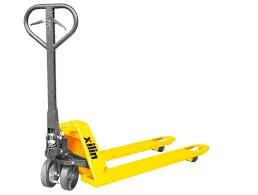


Understanding Overhead Crane Weight Scales Functionality and Importance
Overhead cranes are essential tools in various industries, facilitating the movement of heavy loads with ease and precision. However, the safe and efficient operation of these cranes relies heavily on accurate weight measurement. This is where overhead crane weight scales come into play. These scales are critical for ensuring safety, improving operational efficiency, and enhancing overall productivity in environments that demand rigorous load handling.
What is an Overhead Crane Weight Scale?
An overhead crane weight scale is a device integrated into the crane system designed to accurately measure the weight of the loads being lifted. These scales can be standalone units, integrated into the crane’s control system, or include features such as digital displays, alarms, and remote monitoring capabilities. The primary purpose of these scales is to provide real-time weight measurements to the crane operator, allowing for safer lifting practices and adherence to regulatory requirements.
Importance of Weight Measurement
1. Safety Compliance One of the most significant reasons for using weight scales in overhead cranes is to ensure compliance with safety standards. Each crane has a rated load capacity, and exceeding this limit can lead to accidents, equipment failure, and severe injuries. Accurate weight measurement helps operators avoid overload situations, thereby maintaining a safe working environment.
2. Operational Efficiency Knowing the exact weight of a load enables operators to make informed decisions regarding lifting procedures. By understanding the weight, operators can select the appropriate rigging equipment and techniques for each load, reducing the time spent moving materials. This efficiency contributes to faster project timelines and improved resource management, ultimately leading to cost savings.

3. Preventive Maintenance Regularly monitoring the weights being lifted can also lead to better maintenance practices. Over time, cranes that consistently operate near their maximum capacity may experience increased wear and tear. Weight scales allow companies to track usage patterns and make preventive maintenance decisions based on actual load data, extending the lifespan of the equipment and reducing repair costs.
4. Data Collection and Reporting Modern weight scales often come equipped with data logging capabilities. This feature allows companies to collect and analyze load data over time, identifying trends and making informed decisions about equipment life cycles and operational adjustments. This information can be invaluable for compliance reporting, audits, and optimizing operations.
Choosing the Right Weight Scale
When selecting an overhead crane weight scale, several factors should be considered. These include the scale's maximum weight capacity, accuracy, ease of installation, and compatibility with existing crane systems. Additionally, operators should look for features such as wireless connectivity, which allows for remote monitoring and management of load data, as well as durability to withstand harsh industrial environments.
Conclusion
In summary, overhead crane weight scales play a crucial role in ensuring the safe and efficient operation of lifting equipment in industrial settings. By providing accurate weight measurements, these scales contribute to workplace safety, enhance operational efficiency, and support preventative maintenance protocols. Investing in high-quality weight scales is essential for any organization that utilizes overhead cranes, ultimately leading to improved safety standards and operational performance.



